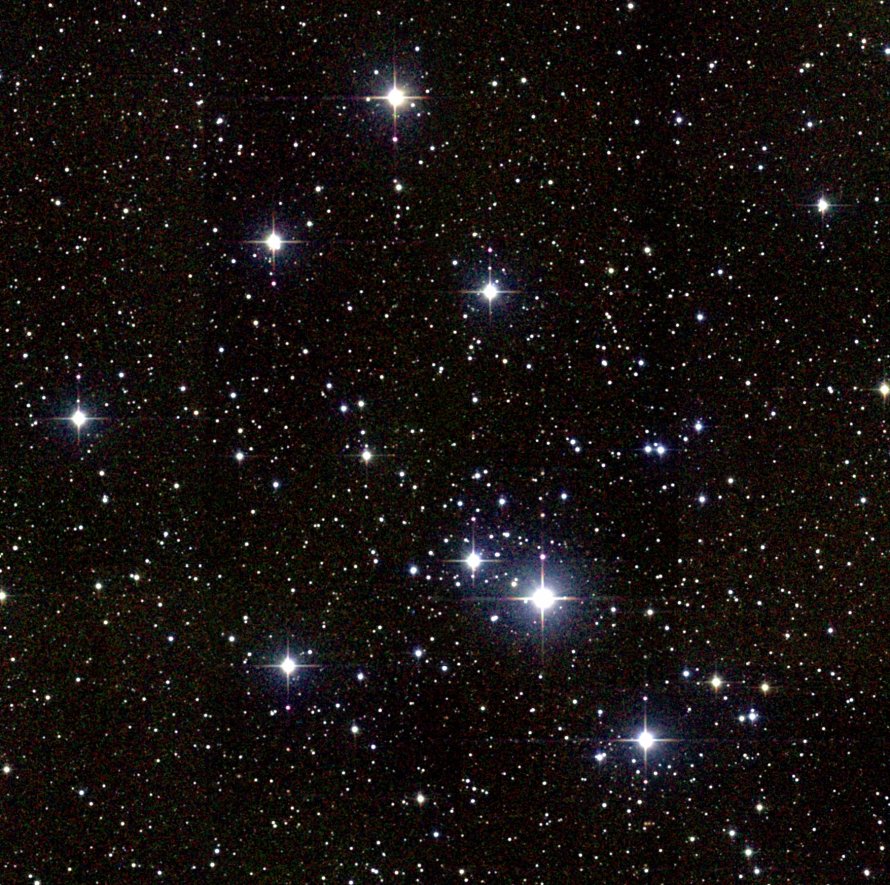M41 (NGC 2287)
Messier 41 (NGC 2287) is an open cluster located in the constellation Canis Major, in the Orion Arm of the Milky Way Galaxy in the Local Group of galaxies. M41 is 2300 light years away from Earth.
M41 is best viewed during winter, is magnitude 4.5, and can be viewed with naked eye. M41 is 38' in apparent size. For reference, the full moon is 30'.
Observing difficulty: Easy
- Name:
- Type:
- open cluster
- Constellation:
- Canis Major
- NGC or IC:
- NGC 2287
- Magnitude:
- 4.5
- Viewing:
- naked eye
- Size:
- 38'
- Distance (light years):
- 2300 LY
- RA:
- 6h 47.0m
- Dec:
- -20 44'
- Season:
- winter
- Milky Way location:
- Orion Arm
- Galaxy group:
- Local Group
- Messier Marathon #:
- 21
* The naked eye can see up to magnitude ~7-8 objects under ideal dark sky conditions.
An Open Cluster in Canis Major
Messier 41, also known as M41 or NGC 2287, is an open cluster situated in the Canis Major constellation. It is a gathering of stars, conveniently located in the night sky, making it a desirable target for amateur and professional astronomers alike. This article aims to provide an in-depth analysis of M41, from its physical properties and historical context to guidance for its observation.
Historical Background
One of the earliest recorded observations of M41 comes from Aristotle, around 325 B.C., making it one of the few deep-sky objects noted in ancient times. It was later cataloged by Charles Messier, a French astronomer, on January 16, 1765. He included it in his catalog of comet-like objects, contributing to its commonly used name today, Messier 41.
Physical Properties and Magnitude
M41 is an open cluster containing about 100 stars, the brightest of which is a K3-type giant with an apparent magnitude of 6.3. The overall apparent magnitude of M41 is approximately 4.5, which is easily visible to the naked eye under good conditions, and appears quite bright in binoculars or small telescopes. The cluster spans about 25 light-years in diameter and is approximately 2,300 light-years away from Earth.
The age of M41 is estimated to be between 190 to 240 million years old. The stars within the cluster are loosely bound by mutual gravitational attraction and are slowly drifting apart over time, a common characteristic of open clusters.
Astronomical Significance
Open clusters like M41 provide critical information about stellar evolution. By observing the properties of its stars, astronomers can gain insight into the age of the cluster and the lifecycle stages of its stars. Additionally, M41's relatively close proximity to our solar system makes it an excellent subject for such studies.
Finding and Observing M41
M41 is located in the constellation Canis Major, just south of Sirius, the brightest star in the sky, making it relatively easy to locate. From Sirius, one only needs to look a few degrees southward to find the cluster. Given its magnitude of 4.5, M41 can be viewed with the naked eye in areas with little light pollution.
For a more detailed view, binoculars or a small telescope will resolve the individual stars of the cluster, offering an impressive sight. The brightest members of M41 are blue-white, with some contrasting red giants scattered throughout, providing a beautiful and diverse color palette for observers.



